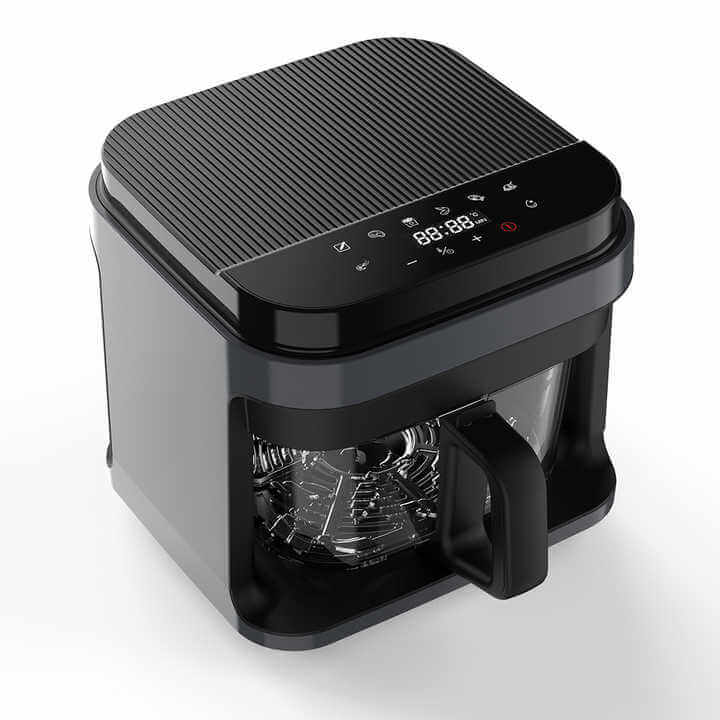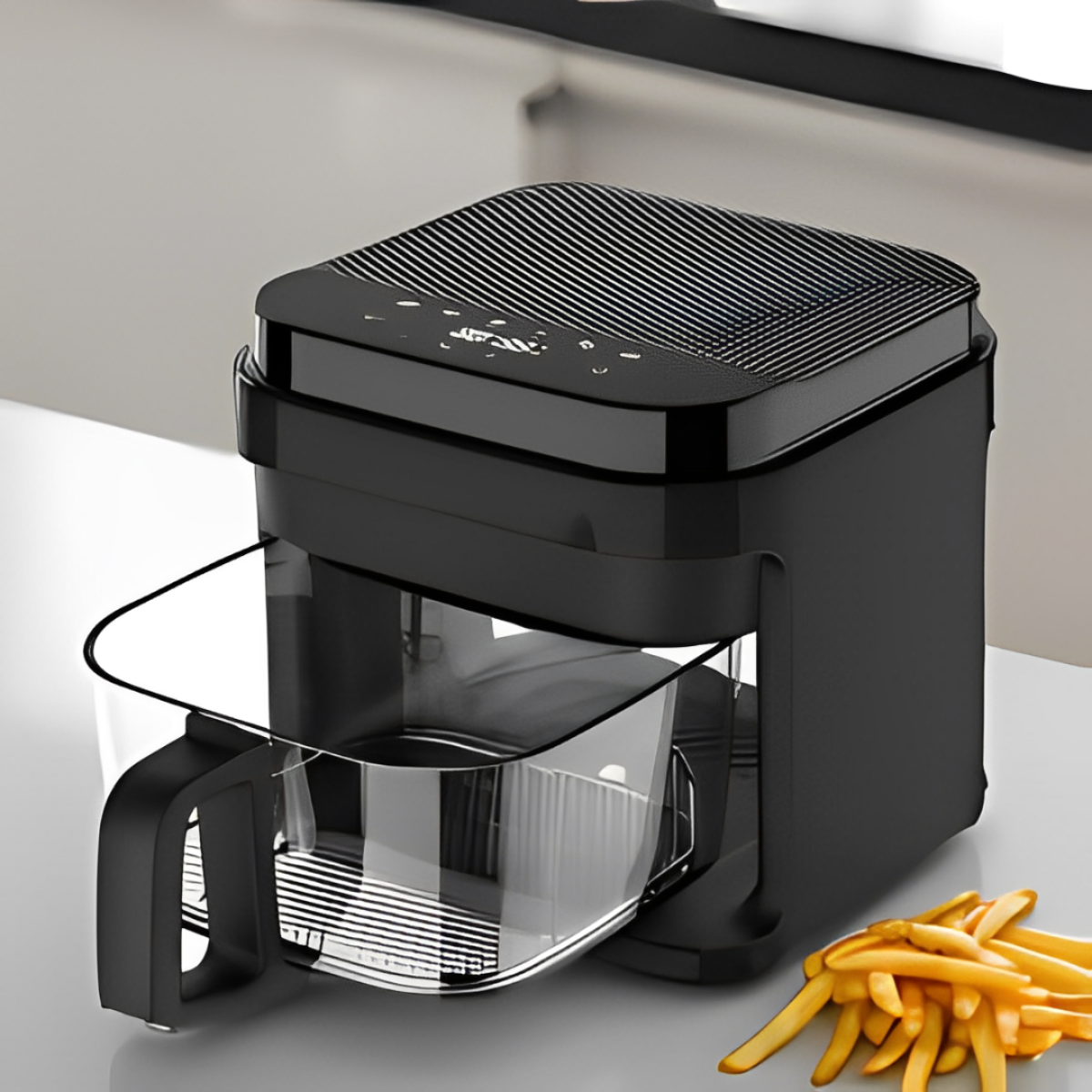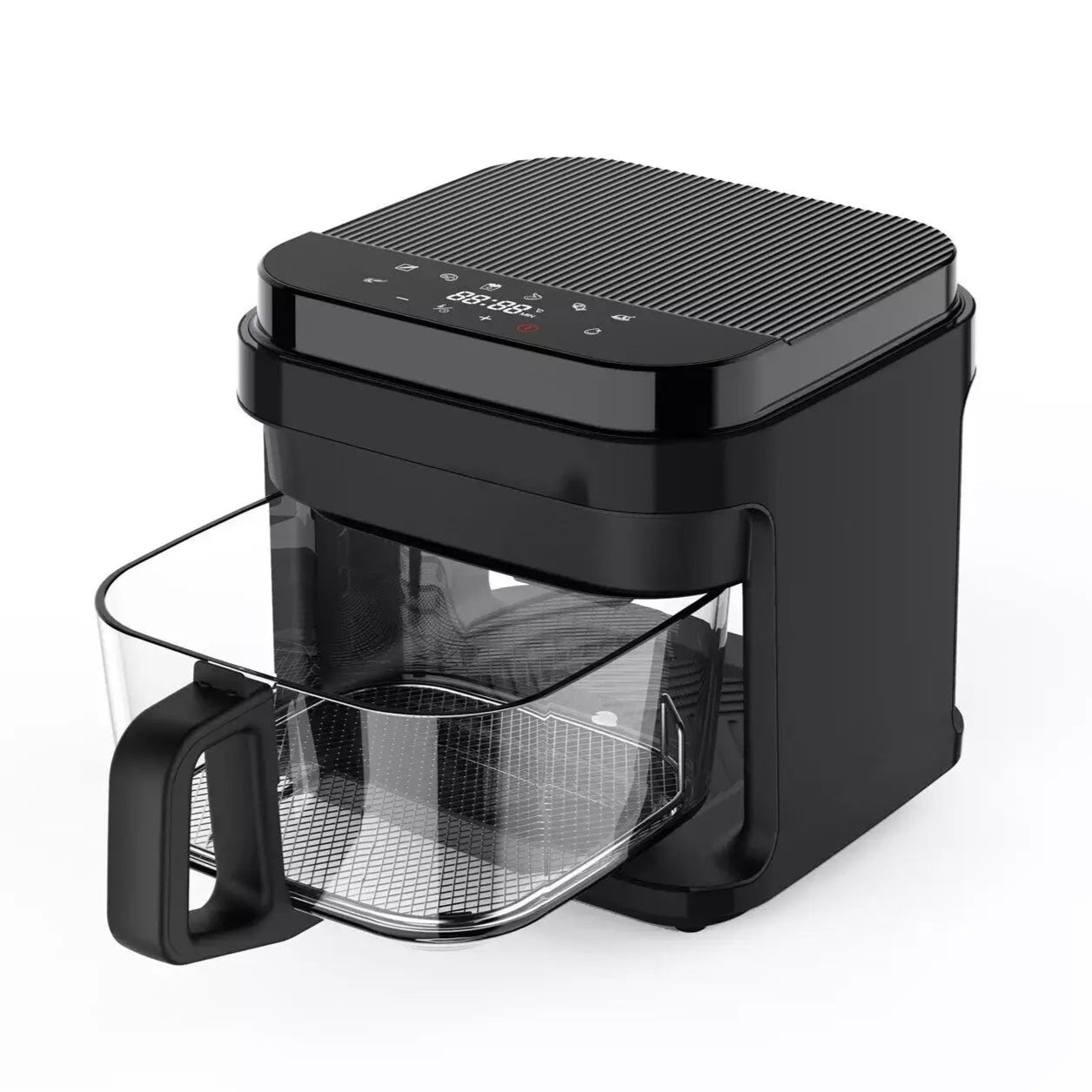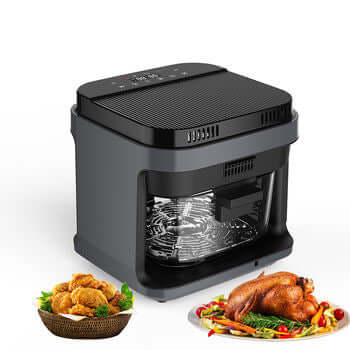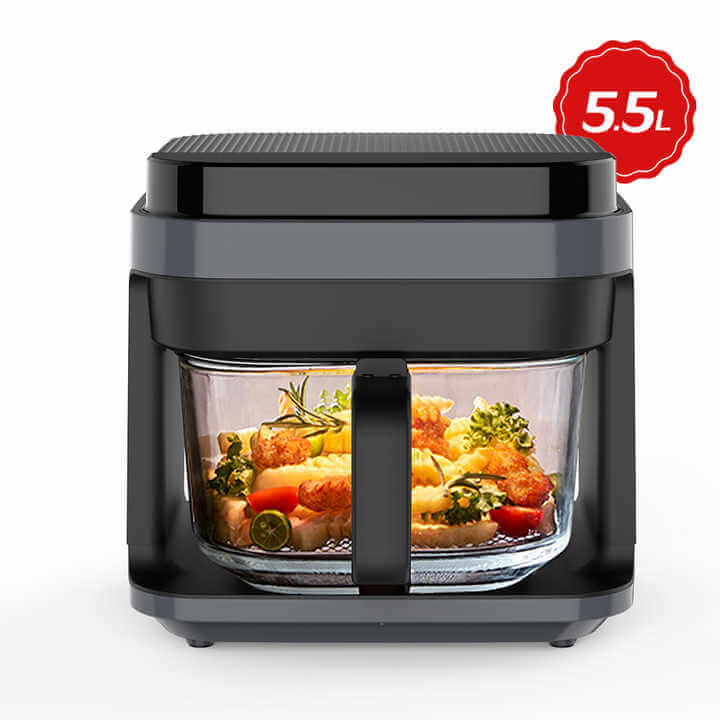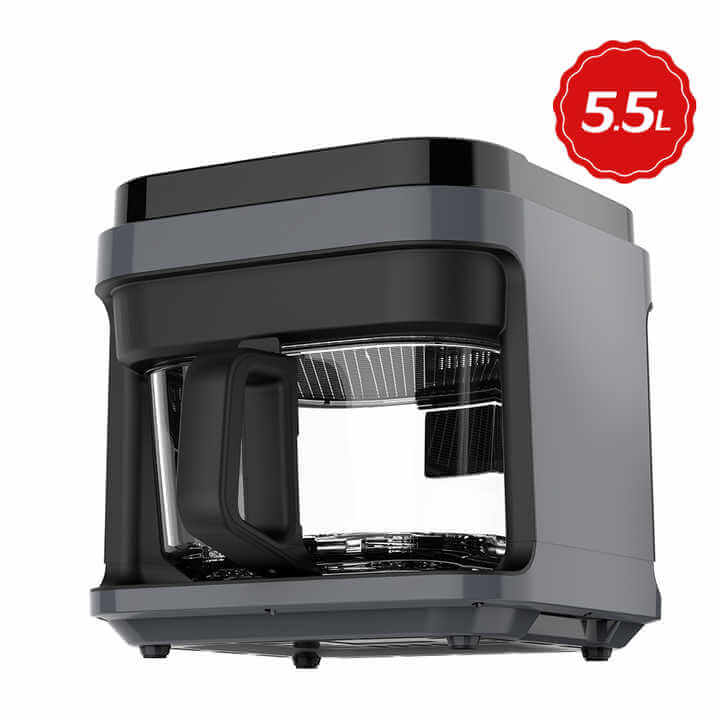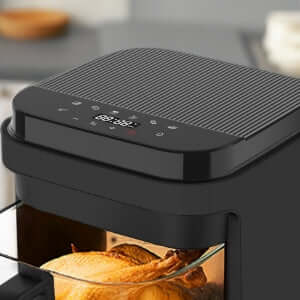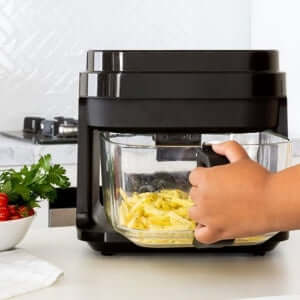Master Your Glass Air Fryer: Advanced Cooking Techniques and Pro Tips for Perfect Results
How do you master a glass air fryer in Australia for perfect results?
To master a glass air fryer in Australia, use precision temperature layering, optimize airflow by avoiding overcrowding, and leverage its transparency for real-time monitoring. These advanced techniques ensure even cooking, safe non-toxic meals, and professional-quality results in Aussie kitchens.
Glass air fryers like the Terra Wellness 5.5L Glass Air Fryer offer unique advantages that, when properly utilized, can elevate your cooking to professional levels. The transparency of glass construction allows for visual monitoring that's impossible with traditional air fryers, while the chemical-free cooking environment ensures pure flavors and maximum safety. This comprehensive guide will teach you advanced techniques to master your glass air fryer and achieve consistently outstanding results.
Whether you're a beginner looking to maximize your investment or an experienced cook wanting to explore advanced techniques, this guide provides the knowledge and skills needed to become a glass air fryer expert. From understanding heat dynamics to mastering complex cooking methods, you'll learn how to harness the full potential of your glass air fryer.
Understanding Glass Air Fryer Dynamics
Heat Distribution and Thermal Properties
Glass air fryers operate differently from traditional models due to the unique thermal properties of borosilicate glass:
Heat Retention: Glass retains heat longer than metal, which affects cooking dynamics:
•Food continues cooking briefly after the heating cycle ends
•Residual heat can be used for gentle finishing
•Preheating is more effective and longer-lasting
•Temperature stability is superior to metal chambers
Even Heat Distribution: The thermal mass of glass creates more even heating:
•Reduces hot spots common in metal air fryers
•Provides gentler, more consistent cooking environment
•Better for delicate foods that can easily overcook
•Ideal for slow-cooking techniques at lower temperatures
Visual Monitoring Advantages: The transparency of glass offers unique cooking benefits:
•Real-time observation of browning and crisping
•Ability to judge doneness without opening the chamber
•Visual cues for timing adjustments
•Learning tool for understanding cooking processes
Air Circulation Optimization
Understanding Airflow Patterns: Glass air fryers typically have optimized airflow designs:
•Hot air circulates in specific patterns
•Food placement affects air circulation efficiency
•Understanding airflow helps optimize cooking results
•Visual observation helps identify circulation issues
Maximizing Air Circulation:
•Don't overcrowd the cooking chamber
•Leave space between food pieces
•Use racks and accessories to create layers
•Position foods to take advantage of airflow patterns
Advanced Temperature Control Techniques
Precision Temperature Management
Temperature Layering: Use different temperatures throughout the cooking process:
1.Low Start (120-140°C): Gentle initial cooking for thick items
2.Medium Build (160-180°C): Main cooking phase for most foods
3.High Finish (190-200°C): Final crisping and browning
Visual Temperature Cues: Learn to read visual signs through the glass:
•Steam patterns indicate moisture levels
•Browning progression shows heat intensity
•Bubble formation in batters indicates proper temperature
•Oil shimmer indicates optimal frying temperature
Thermal Shock Prevention: Protect your glass air fryer from temperature stress:
•Gradual temperature increases for thick glass
•Avoid extreme temperature changes
•Allow cooling between high-temperature sessions
•Use room temperature ingredients when possible
Advanced Timing Techniques
Staged Cooking: Cook different components at different times:
1.Start Dense Items First: Root vegetables, thick proteins
2.Add Medium Items: Regular vegetables, thinner proteins
3.Finish with Quick Items: Leafy greens, delicate garnishes
Residual Heat Cooking: Utilize the heat retention properties of glass:
•Turn off heat 2-3 minutes early for delicate items
•Use residual heat for gentle finishing
•Perfect for melting cheese or warming sauces
•Ideal for resting meats while maintaining temperature
Mastering Different Food Categories
Protein Perfection
Chicken Techniques: Whole Chicken:
•Start breast-side down for even cooking
•Flip halfway through for optimal browning
•Use visual cues to judge skin crispiness
•Internal temperature should reach 74°C (165°F)
•Skin-side down first for better rendering
•Monitor through glass for perfect browning
•Adjust timing based on piece thickness
•Rest for 5 minutes after cooking
Fish and Seafood: Delicate Fish:
•Use lower temperatures (150-160°C)
•Monitor closely through glass for doneness
•Fish is done when it flakes easily
•Avoid overcooking with visual monitoring
•High heat for quick cooking (180-190°C)
•Watch for color changes through glass
•Remove immediately when properly colored
•Don't overcook to maintain tenderness
Red Meat Techniques: Steaks:
•High heat for searing (190-200°C)
•Monitor browning through glass
•Use meat thermometer for internal temperature
•Rest after cooking for juice redistribution
•Break up during cooking for even browning
•Monitor fat rendering through glass
•Drain excess fat if necessary
•Cook to safe internal temperatures
Vegetable Mastery
•Cut uniformly for even cooking
•Start at lower temperatures for tender interiors
•Increase heat for final crisping
•Monitor caramelization through glass
•High heat for quick cooking (180-190°C)
•Watch carefully to prevent burning
•Remove when edges just start to crisp
•Season immediately after cooking
•Lower temperatures (140-160°C)
•Monitor closely for doneness
•Preserve color and nutrients
Baking and Desserts
Cake and Muffin Techniques:
•Use appropriate baking dishes that fit the chamber
•Monitor rising through glass
•Test doneness with toothpick
•Cool gradually to prevent thermal shock
•Use parchment paper for easy removal
•Watch browning through glass
•Rotate halfway through for even cooking
•Monitor caramelization of natural sugars
•Adjust timing based on fruit ripeness
•Use visual cues for perfect doneness
•Serve warm for best flavor
Advanced Cooking Methods
Multi-Stage Cooking
1.Steam-Then-Crisp: Start with covered cooking for tenderness, finish uncovered for crispiness
2.Low-Then-High: Begin with low temperature for even cooking, finish with high heat for browning
3.Marinate-Cook-Rest: Proper preparation, cooking, and resting for optimal results
•Use multiple racks for different foods
•Cook items with similar timing together
•Stagger start times for simultaneous finishing
•Monitor all layers through glass construction
Specialized Techniques
•Use lowest temperature settings (80-100°C)
•Extend cooking times significantly
•Monitor moisture removal through glass
•Ensure proper air circulation
•Lower temperatures than original cooking
•Monitor to prevent overcooking
•Use visual cues for optimal results
•Use lowest temperature settings
•Create humid environment if needed
•Monitor rising progress through glass
•Perfect for bread and pastry preparation
Troubleshooting and Problem-Solving
Common Cooking Issues
Uneven Browning: Causes: Overcrowding, poor air circulation, uneven food sizes Solutions:
•Rotate foods during cooking
Overcooking: Causes: Too high temperature, too long cooking time, residual heat Solutions:
•Lower temperature settings
•Account for residual heat
•Monitor visually through glass
Undercooking: Causes: Too low temperature, insufficient time, overcrowding Solutions:
•Increase temperature gradually
•Ensure proper preheating
Advanced Problem-Solving
•Control humidity for optimal results
•Use venting techniques when needed
•Balance moisture retention and evaporation
•Understand how glass affects moisture dynamics
•Understand how glass affects flavor concentration
•Use proper seasoning techniques
•Time seasoning application correctly
•Balance flavors for glass cooking environment
Accessory Mastery
Essential Accessories
•Prevents food from sitting in drippings
•Allows for more complex cooking setups
•Glass-compatible materials
•Proper sizing for air circulation
•Easy cleaning considerations
•Silicone tongs for safe handling
•Heat-resistant brushes for basting
•Thermometers for precision cooking
•Timers for complex cooking sequences
Creative Accessory Uses
•Use oven-safe dishes creatively
•Create custom cooking setups
•Adapt traditional cookware
•Develop personal techniques
Multi-Function Approaches:
•Use accessories for multiple purposes
•Combine accessories for complex cooking
•Create efficient cooking workflows
•Maximize space utilization
Recipe Development and Adaptation
Converting Traditional Recipes
•Reduce temperatures by 10-15°C from oven recipes
•Account for more efficient heat transfer
•Consider glass heat retention properties
•Adjust for visual monitoring capabilities
•Reduce cooking times by 20-25%
•Account for preheating efficiency
•Consider residual heat cooking
•Use visual cues for timing adjustments
•Modify preparation methods for air frying
•Adjust seasoning for concentrated flavors
•Adapt moisture management techniques
•Consider glass-specific advantages
Creating Original Recipes
Understanding Your Equipment:
•Know your glass air fryer's characteristics
•Understand heat patterns and timing
•Develop personal cooking preferences
•Create signature techniques
Experimentation Guidelines:
•Start with familiar ingredients
•Make small adjustments gradually
•Document successful techniques
Maintenance for Optimal Performance
Performance-Focused Maintenance
Regular Cleaning for Best Results:
•Clean glass thoroughly for optimal visibility
•Maintain air circulation efficiency
•Prevent flavor transfer between dishes
•Ensure even heat distribution
Calibration and Adjustment:
•Verify temperature accuracy regularly
•Adjust techniques based on performance
•Monitor for changes over time
•Maintain consistent results
Long-Term Performance
Preserving Glass Clarity:
•Use proper cleaning techniques
•Maintain transparency for visual monitoring
•Keep air circulation systems clean
•Monitor heating element performance
•Ensure proper seal integrity
•Optimize energy efficiency
Advanced Safety Considerations
Glass-Specific Safety
•Understand thermal shock risks
•Manage temperature transitions carefully
•Use proper handling techniques
•Recognize stress indicators
•Use appropriate protective equipment
•Handle hot glass components carefully
•Understand weight distribution
•Practice safe lifting techniques
Food Safety Excellence
•Use reliable thermometers
•Understand safe cooking temperatures
•Monitor internal temperatures accurately
•Ensure food safety compliance
•Maintain clean cooking environment
•Prevent cross-contamination
•Use proper food handling techniques
Conclusion: Mastering Your Glass Air Fryer
Mastering a glass air fryer like the Terra Wellness 5.5L Glass Air Fryer requires understanding its unique characteristics and leveraging its advantages. The transparency, even heating, and chemical-free environment create opportunities for cooking excellence that aren't possible with traditional air fryers.
The key to mastery is practice combined with understanding. Use the visual advantages of glass construction to learn how foods cook, develop your timing instincts, and create your own signature techniques. The safety and purity of glass cooking, combined with the health benefits of air frying, make this an ideal cooking method for health-conscious families.
Remember that every glass air fryer has its own characteristics. Spend time getting to know your specific unit, understand its heating patterns, and develop techniques that work best for your cooking style and preferences. The investment in learning these advanced techniques will pay dividends in terms of cooking results, food safety, and culinary satisfaction.
Your glass air fryer is a precision cooking instrument capable of producing restaurant-quality results in your home kitchen. With the techniques and knowledge provided in this guide, you're well-equipped to explore the full potential of glass air fryer cooking and create memorable meals for your family and friends.
The journey to mastery is ongoing, but with these advanced techniques as your foundation, you'll continue to discover new ways to create healthy, delicious meals using the safest and most effective air frying technology available.
Use code BLOG20 for 20% OFF now.
FAQs About Glass Air Fryer Cooking in Australia
Q1: What makes glass air fryers better for cooking in Australia?
A: Glass air fryers offer chemical-free cooking, even heat distribution, and visual monitoring—making them safer and more effective for Aussie homes.
Q2: How do I prevent overcooking in a glass air fryer?
A: Lower the temperature, shorten cooking times, and use residual heat. The transparency of glass lets you visually track doneness without opening the fryer.
Q3: Can I bake desserts in a glass air fryer?
A: Yes. You can bake cakes, muffins, and cookies by using oven-safe dishes, adjusting oven recipes slightly, and monitoring browning through the glass.
Q4: What’s the best way to cook chicken in a glass air fryer?
A: Start breast-side down for whole chicken, monitor crisping visually, and ensure the internal temperature reaches 74°C for safe and juicy results.
Q5: How do I adapt recipes for glass air fryers in Australia?
A: Reduce oven temperatures by 10–15°C, shorten cooking times by 20–25%, and use the glass transparency to monitor caramelisation and doneness.
For further reading please refer to:
Can You Put Glass in an Air Fryer? Safe Use Guide
Glass Air Fryer Australia: Discover the Best Non-Toxic Cooking Solution






